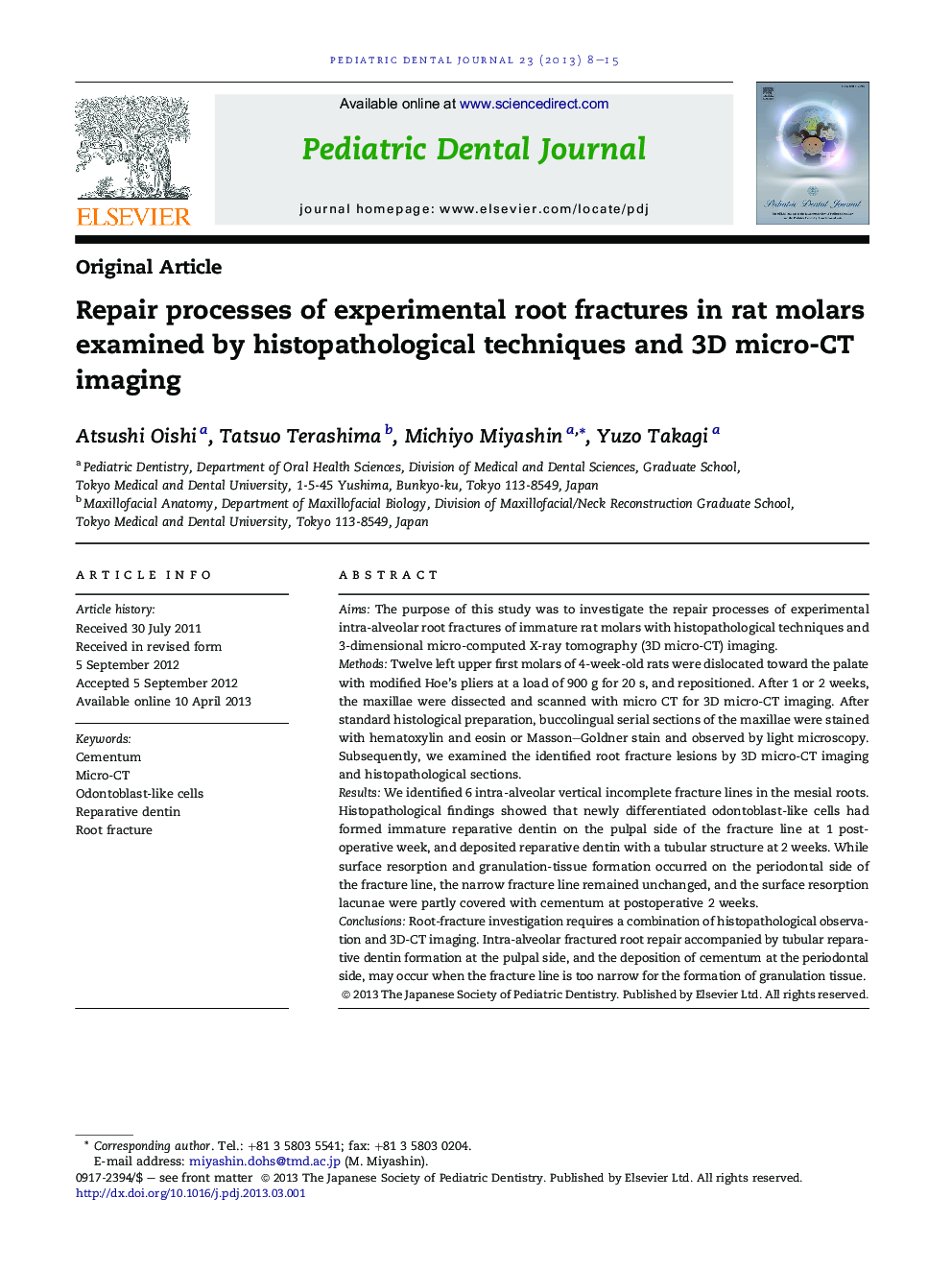| Article ID | Journal | Published Year | Pages | File Type |
|---|---|---|---|---|
| 3171567 | Pediatric Dental Journal | 2013 | 8 Pages |
AimsThe purpose of this study was to investigate the repair processes of experimental intra-alveolar root fractures of immature rat molars with histopathological techniques and 3-dimensional micro-computed X-ray tomography (3D micro-CT) imaging.MethodsTwelve left upper first molars of 4-week-old rats were dislocated toward the palate with modified Hoe's pliers at a load of 900 g for 20 s, and repositioned. After 1 or 2 weeks, the maxillae were dissected and scanned with micro CT for 3D micro-CT imaging. After standard histological preparation, buccolingual serial sections of the maxillae were stained with hematoxylin and eosin or Masson–Goldner stain and observed by light microscopy. Subsequently, we examined the identified root fracture lesions by 3D micro-CT imaging and histopathological sections.ResultsWe identified 6 intra-alveolar vertical incomplete fracture lines in the mesial roots. Histopathological findings showed that newly differentiated odontoblast-like cells had formed immature reparative dentin on the pulpal side of the fracture line at 1 postoperative week, and deposited reparative dentin with a tubular structure at 2 weeks. While surface resorption and granulation-tissue formation occurred on the periodontal side of the fracture line, the narrow fracture line remained unchanged, and the surface resorption lacunae were partly covered with cementum at postoperative 2 weeks.ConclusionsRoot-fracture investigation requires a combination of histopathological observation and 3D-CT imaging. Intra-alveolar fractured root repair accompanied by tubular reparative dentin formation at the pulpal side, and the deposition of cementum at the periodontal side, may occur when the fracture line is too narrow for the formation of granulation tissue.
